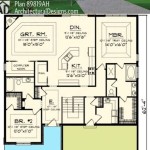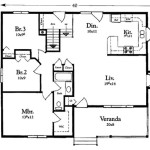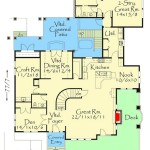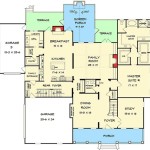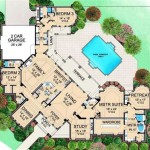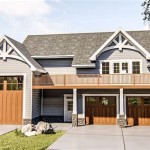Small Home Plans For Seniors
As we age, our needs and preferences for our homes change. For many seniors, downsizing to a smaller home is a desirable option. Smaller homes are easier to maintain, more energy-efficient, and can provide a more comfortable and safe living environment.
If you're a senior considering downsizing, there are a few things to keep in mind when choosing a new home plan. First, consider your current and future needs. Do you need a home with one level or multiple levels? Do you need a home with a yard? How many bedrooms and bathrooms do you need?
Once you have a good understanding of your needs, you can start browsing small home plans. There are many different plans available, so take your time and find one that fits your style and needs. Here are a few things to look for in a small home plan for seniors:
- One-level living: One-level living is ideal for seniors who have difficulty with stairs. A one-level home eliminates the need to climb stairs, which can be a safety hazard.
- Wide doorways and hallways: Wide doorways and hallways are essential for seniors who use wheelchairs or walkers. They also make it easier to move furniture and other items around the home.
- Grab bars and other safety features: Grab bars in the bathroom, shower, and other areas of the home can help seniors maintain their balance and prevent falls. Other safety features, such as non-slip flooring and ramps, can also make the home safer for seniors.
- Energy efficiency: Energy-efficient features can help seniors save money on their utility bills. Look for homes with Energy Star appliances, windows, and insulation.
- Universal design: Universal design features make homes more accessible and comfortable for people of all ages and abilities. Some universal design features to look for include lever handles on doors and faucets, adjustable-height countertops, and roll-under sinks.
Downsizing to a smaller home can be a big decision, but it can also be a very positive one. By choosing a home plan that meets your needs and preferences, you can create a comfortable and safe living environment for yourself for years to come.
Here are a few additional tips for choosing a small home plan for seniors:
- Visit model homes: If possible, visit model homes of different small home plans to get a feel for the layout and space. This can help you make an informed decision about which plan is right for you.
- Talk to your doctor or therapist: Your doctor or therapist can help you assess your needs and make recommendations for a home plan that is safe and accessible for you.
- Hire a qualified contractor: Once you have chosen a home plan, it is important to hire a qualified contractor to build your home. A qualified contractor will ensure that your home is built to your specifications and meets all safety codes.
Downsizing to a smaller home can be a great way to improve your quality of life. By following these tips, you can choose a home plan that meets your needs and preferences and create a comfortable and safe living environment for yourself for years to come.

Small One Story 2 Bedroom Retirement House Plans Houseplans Blog Com

Small One Story 2 Bedroom Retirement House Plans Houseplans Blog Com

Small One Story 2 Bedroom Retirement House Plans Houseplans Blog Com

Small One Story 2 Bedroom Retirement House Plans Houseplans Blog Com

This Modern Tropical Home Is A Granny Flat For Hip Elderly Couple Small House Plans Backyard

10 Small House Plans With Open Floor Blog Homeplans Com

27 Adorable Free Tiny House Floor Plans Craft Mart

Empty Nester House Plans Retirement The Designers

Small One Story 2 Bedroom Retirement House Plans Houseplans Blog Com

Luxury Retirement Communities For Active S And 55 Seniors Property Montecito New House Plans Dream Small

